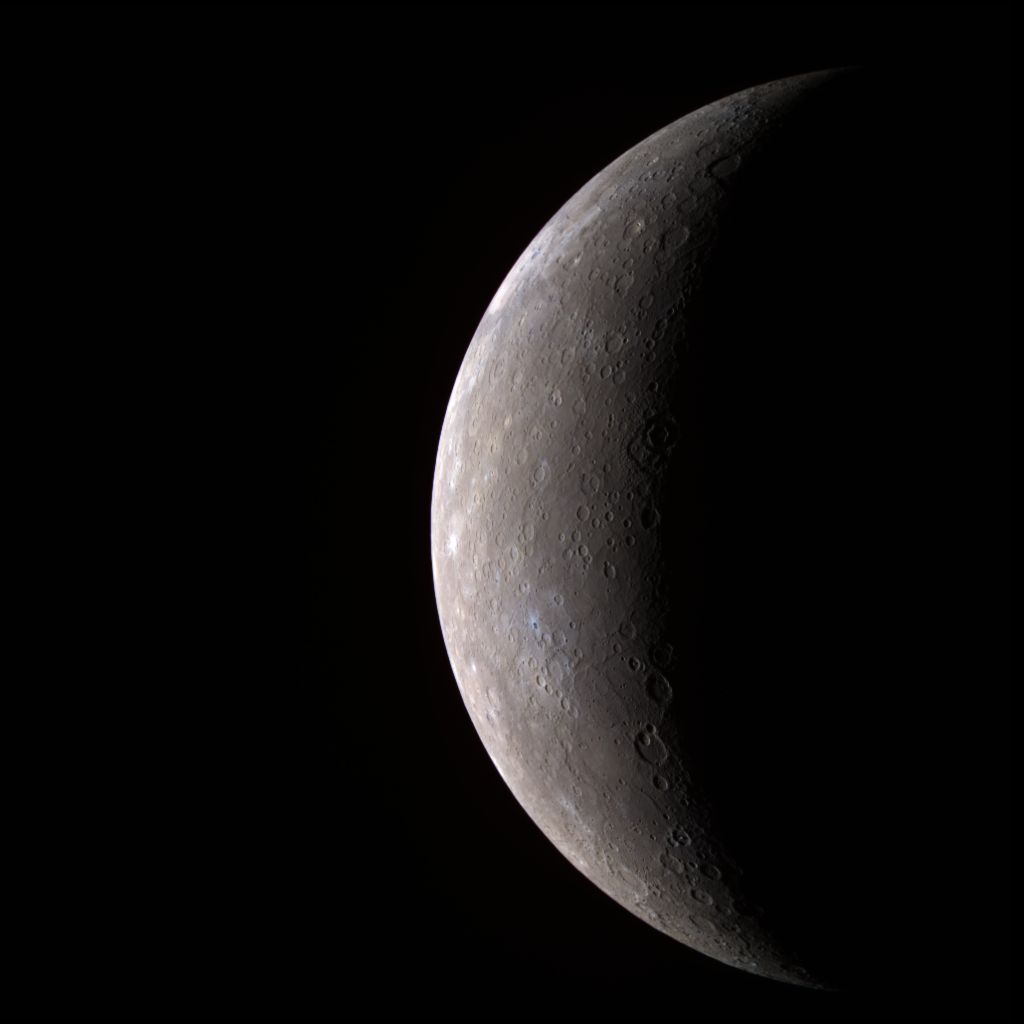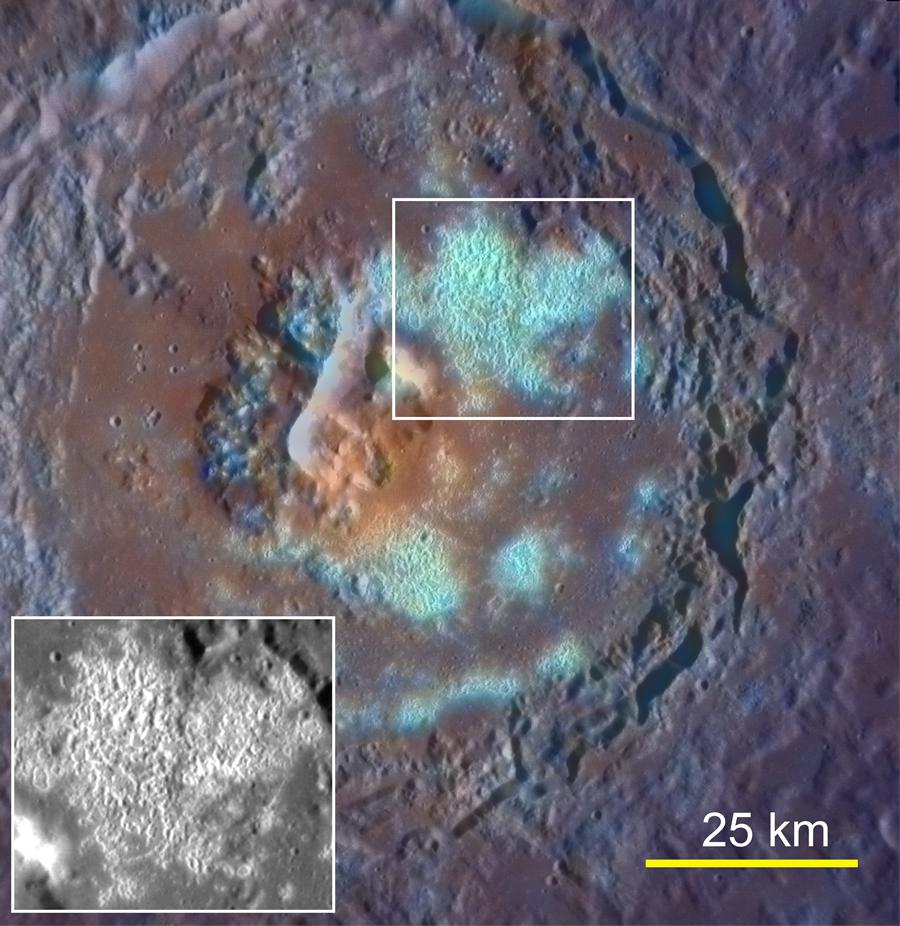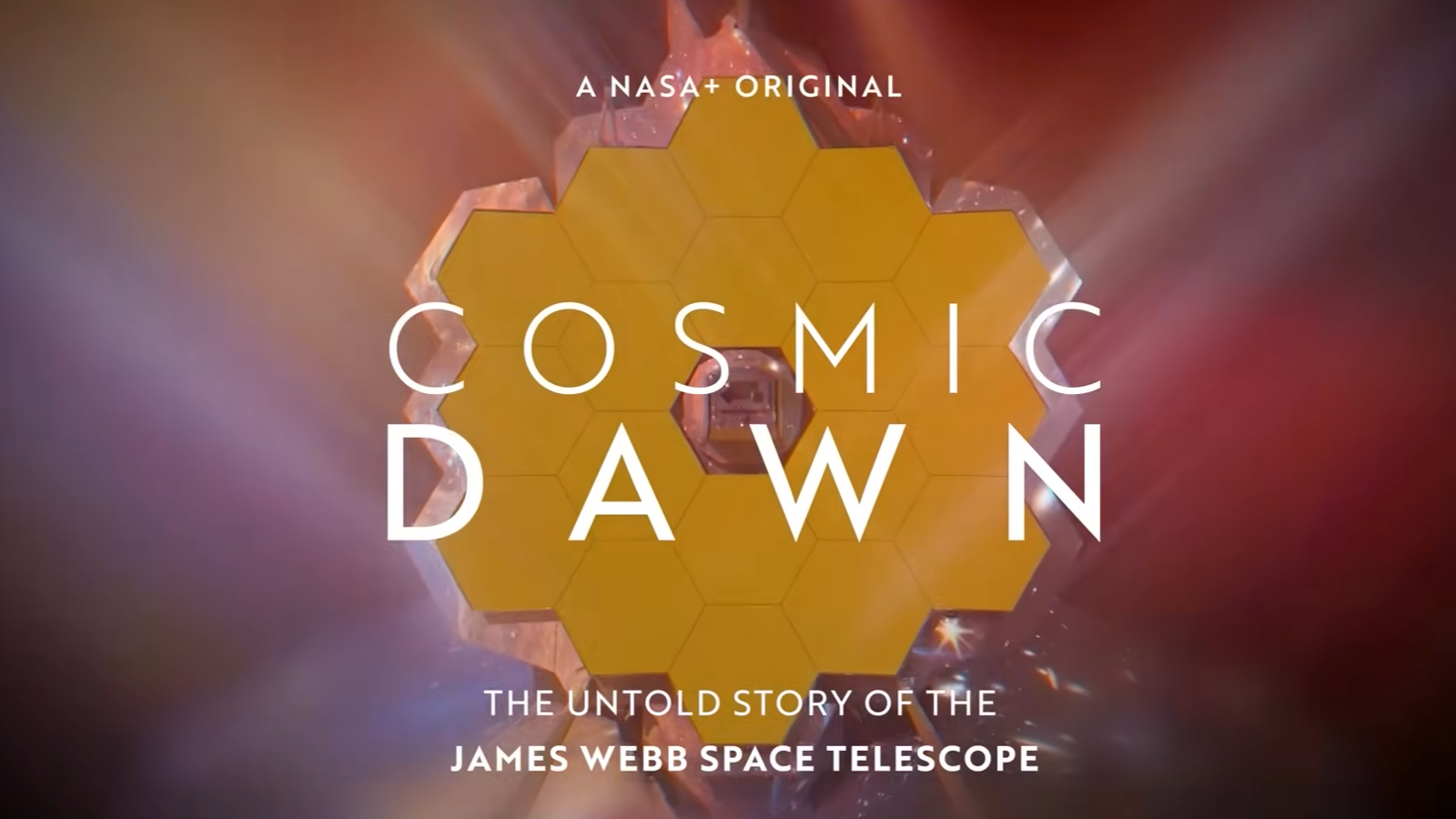Asteroid Crash May Explain Mercury's Strange Spin

A collision with an asteroid might have set the planet Mercury whirling oddly in its orbit, a new study suggests.
When one body orbits another — say, a moon around a planet or a planet around a star — the orbiting body often spins. Our planet experiences day and night because it spins on its axis, regularly changing which side it exposes to the sun.
However, the gravitational pull that orbiting moons and planets experience slows the rate of their spin. The most stable arrangement they can reach is to keep just one side always facing the body they are orbiting. Such "tidal locking" is why our moon always keeps the same face pointed toward Earth.
If the same were to happen with Earth and the sun, our planet would rotate once on its axis for every orbit it completed around the sun. In other words, an Earth day would be exactly as long as an Earth year, with one side receiving constant sunshine and the other experiencing perpetual night.
Scientists had long assumed that Mercury was tidally locked with the sun — the planet's tiny size and proximity to the sun suggested the star's gravitational pull would quickly force Mercury into such a state. However, radar observations of Mercury surprisingly revealed that the planet led a far stranger life, rotating three times on its axis for every two orbits it completes around the sun. [Mercury Photos From NASA's Messenger Probe]
Now, researchers suggest that Mercury was once tidally locked, initially spinning in the opposite direction to its orbit.
"Mercury once had a spin rate synchronous with the sun, like the moon with the Earth," study co-author Alexandre Correia, a planetary scientist at the University of Aveiro in Portugal, told SPACE.com.
Get the Space.com Newsletter
Breaking space news, the latest updates on rocket launches, skywatching events and more!
Computer models suggest that a giant impact from an asteroid then knocked it into its current strange configuration. The space rock would have been at least 43 miles (70 kilometers) wide and 550 trillion metric tons in mass, or 1/600,000 the mass of Mercury, Correia said.
Evidence of this collision might include Caloris Basin, Mercury's largest impact crater, which matches the predicted size, age and location of the impact, the researchers said. "It is the perfect candidate," Correia said.
Such an impact might also explain certain hollows seen on Mercury's surface.

If the planet was tidally locked, one side would have been extremely bright and hot while the other extremely dark and cold. Substantial deposits of ice might have accumulated on the dark half, some of which might have been buried under matter ejected from impacts.
When Mercury's spin later changed and daylight began falling on the once dark side, this buried ice might have vaporized, leaving behind hollows, the researchers explained.
In addition, if Mercury was tidally locked, numerous other differences might be seen between the planet's former dark and light sides. For instance, the day-lit side would have been more viscous and thus flatter and more molten-looking, while the night side would have been more exposed to impacts and thus be more cratered.
"The probe Messenger, presently in Mercury's orbit, can give further insight," Correia said.
The results of the study were published online today (Dec. 11) in the journal Nature Geoscience.
Follow SPACE.com for the latest in space science and exploration news on Twitter @Spacedotcom and on Facebook.
Join our Space Forums to keep talking space on the latest missions, night sky and more! And if you have a news tip, correction or comment, let us know at: community@space.com.

Charles Q. Choi is a contributing writer for Space.com and Live Science. He covers all things human origins and astronomy as well as physics, animals and general science topics. Charles has a Master of Arts degree from the University of Missouri-Columbia, School of Journalism and a Bachelor of Arts degree from the University of South Florida. Charles has visited every continent on Earth, drinking rancid yak butter tea in Lhasa, snorkeling with sea lions in the Galapagos and even climbing an iceberg in Antarctica. Visit him at http://www.sciwriter.us
